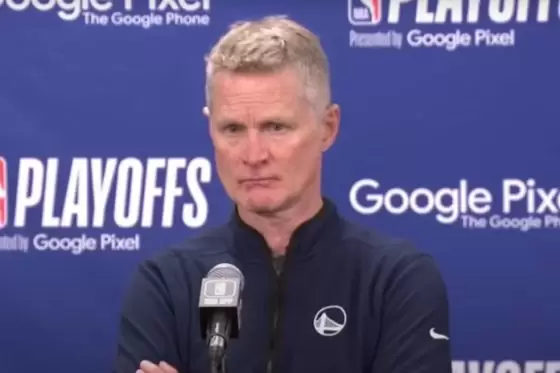So, we’re back here again. Another series tied at 2-2, where it can clearly go either way — a big, missed opportunity from the Boston Celtics, considering they had the chance to take a two-game lead heading into Game 5. But, this team hasn’t done things the easy way all post-season, so expecting the Celtics to suddenly take the path of least resistance was probably more wishful thinking than anything.
Still, this loss could be looked back on as the night the Celtics let a championship slip through their fingers. Or, it could be looked on as the game that snapped the Celtics into action and forced them to find a new gear. Only time will tell.
But, before we begin looking ahead, there are some lessons that can be learned from this loss. After all, you either win or you learn – at least, that’s what I’ve always been taught. The biggest lesson that can be taken away from Game 4, is that if you allow the Golden State Warriors to dictate the pace of the game, you’re playing into their hands. It’s their rulebook at that point.
Far too often, we saw both teams sprinting in transition, looking to get points on the board in the first 4-6 seconds of the shot clock. It was Autobahn basketball; no speed limits. Sure, the Celtics have looked to push the pace throughout the season. They like to get the easy ones as much as the next guy, but that isn’t their primary form of offense. The Warriors, on the other hand, live and die by their ability to get out and run.
What made the Celtics so successful in Game 3, was their ability to attack in the half court, to draw a stunt or a trap, move the rock, and attack space. When transition opportunities arise, take them, but don’t force them to the detriment of what’s made you successful throughout the entire year.
Not all transition possessions are made the same.
You should absolutely be looking to run off of strips or pilfered passes, but off of rebounds? Well, then you need to be more judicial. Is it worth sacrificing your offensive principles to get into a foot race? Transition basketball is heavily predicated on having an advantage. Attacking a defense before it has a chance to get set. But, on many occasions throughout Friday’s contest, that wasn’t the case for the Celtics.
“We wanted to get the ball up quick and get into an offense. If we don’t have anything, still make them work the clock. A lot of times it felt like we were standing around, unsure of who we were trying to go after, and it led to those stalled-down possessions,” Udoka explained after the game.
Take this above play for example. The Celtics run the floor courtesy of a defensive rebound, and quickly get a shot off from deep. The Warriors’ defense may not be set, but they’re certainly back and have built out towards the ball. This isn’t the type of offensive pace the Celtics usually run.
Instead, they like to get into their offense quickly but work for the best shot available. Drive and kick, pin downs, above the break flare screens, wide actions, 21 actions – all of these are part of Boston’s playbook, all of them require pushing the pace, and none of them ask for consistent early shot clock jumpers.
But, that’s what the Warriors do to you. They make you play at their speed. Play their game. And then, they strike.
Suddenly, a movement-heavy offense devolves into stagnancy, everybody is expecting each other to flow into their sets, but they’re so sped up, so one-track-minded on how to score, that the game plan goes out of the window.
“Yeah, you know, like Derrick said, we got ball-watching the guy with the ball instead of just moving like we’ve been doing. The ball handler, it’s kind of hard, because you’re trying to tell everybody to do something while making sure you still see the play with the guy in front of you. You’ve been taught to make a play. For us, we just got to move, plain and simple. If the ball gets stuck and you see it, go screen somebody. But we have to move. We cannot let the ball get stagnant and let them load up on us,” Smart told reporters following the game.
Take the above play for example. There’s no off-ball movement. Rather, everybody is watching Tatum, and positioning themselves for a catch-and-shoot opportunity. The spacing on the possession is poor due to Robert Williams positioning in the paint, allowing the Warriors to build a wall a deter Tatum from driving.
From a Warrior’s perspective, this is an ideal scenario. You can slightly sag off of the perimeter, and focus your efforts on forcing Tatum into a tough pass or shot. With such poor spacing and almost no movement beyond the ball-handler, it’s incredibly easy to set the defense and hunker down.
After a Game 3 performance that promised so much and a hot start to Game 4, Boston allowed the wheels to fall off on Friday night. They let Golden State dictate the terms of engagement, and were left scratching their heads at how a championship-caliber team slammed the door shut down the stretch.
The Celtics are better than this. They have to be better than this. And in Game 5, they need to be better than this, and it all starts with controlling your own pace of play.




